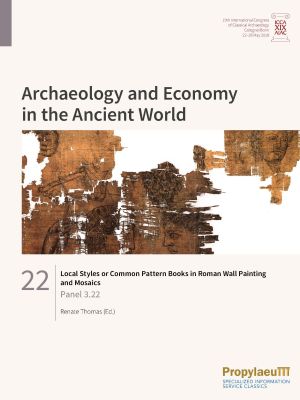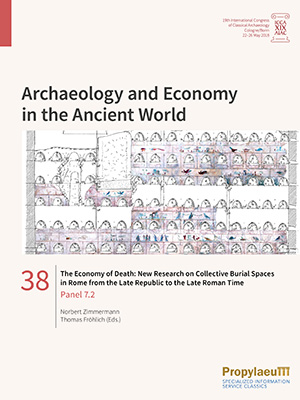Bragantini, Irene
Local Styles or Common Pattern Books in Roman Wall Painting and Mosaics: Panel 3.22
The presentations of the panel "Local styles or common pattern books in Roman mural painting and mosaics" illustrated various aspects of the working methods of ancient workshops and their production. I. Bragantini used the example of the wall paintings in Cartagena and Lyon to emphasise these were made by Italian workshops that in her opinion. While St. Falzone, M. Marano and P. Tomassini focused on the characteristics of the local style in wall painting in Ostia, C. Sbrolli concentrated on the iconographic characteristics of the 'Workshop of the Vetti' in Pompeii. E. Moormann and D. Esposito investigated the question of whether the development of wall painting in Flavian times testified to continuity or a new impulse. C. Boschetti et al. highlighted the differences in the production of mosaics in Aquileia between the Augustan period and the 4th century AD: while the first workshops worked with high quality materials from Campania and probably came from there, the later mosaicists were probably local, as they used cheap materials available locally. B. Tober pointed out that there was an 'international' agreement on the manner of appointing certain room for certain functions. E. Aydogdu and A. Kazim Öz used a mosaic in Metropolis as an example to show that three-dimensional leaf patterns are also based on models that go back to geometric forms.
The Economy of Death: New Research on Collective Burial Spaces in Rome from the Late Republic to the Late Roman Time: Panel 7.2
The contributions of this volume study economic aspects of Roman burial architectures for extended numbers of burials, such as columbaria, large hypogea, or catacombs, and try to form a picture of their owners and users. They discuss how far economic reasons played a leading role in the invention, the development and the use of these big burial monuments in Rome and how these buildings fulfilled the religious and social needs of their users, especially in the transitional period from the Roman to the Early Christian period. New studies in Roman funeral monuments could document interesting evidence for the dynamic process of the preparation and use of burial space. Especially in larger architectures for much more than a single family, the economic aspects of the ownership and use of these installations is fascinating. Who were the planners of the projects, why were certain places and specific architectures chosen? How and at what time in the project were the burials of the owners and their families provided for? In what manner were further tombs sold or given to others? And which locations within the installation were they able to get? During the last decades, a series of general studies on Roman burials and burial customs were base on older documentation out of necessity, while new and more detailed analysis of single monuments often provide new and different insights of interpretation."








